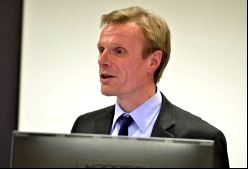UK readers will no doubt be aware there have been a number of fatal cycling accidents on the streets of London lately. These deaths have been widely reported and it seems various politicians, including London Mayor Boris Johnson, have found themselves in a difficult position. This, dear chaps, is no time to sit on the fence making sympathetic noises with no substance.
Aside from the actual accidents, often involving lorries, there is almost certainly much to be learnt by officials, drivers and cyclists alike. Perhaps the most moving element is the sense of commaraderie amongst London’s cyclists. Following a protest organised by the London Cycling Campaign on 13th November, the story goes that a couple of protesters asked themselves what else could be done. This was about the need to press the authorities into taking some positive action to keep cyclists safe.
In no time at all a protest plan was being hatched with the help of leaflets, Facebook and, no doubt, much word-of-mouth taking place to good effect. The result? On Friday 29th November, over 1000 cyclists arrived at the headquarters of Transport for London (TfL) and then after a brief speech and some appropriate music, everyone lay down on the road, right where they were. The photograph above (by Rory Jackson) is impressive but it does it convey the passion, the sounds, the unspoken kinship between those present? Perhaps as a photograph via Twitter, no, it doesn’t. As a message to bring you in to know more, yes it does.
Seeing 1,000 cyclists lying down on the road, with their bicycles, must have been an incredible sight. Just imagine yourself there – 1,000 cyclists, all there for the same purpose. I cannot help but be deeply moved as I imagine what it could be like. Surely it must have had some impact on Boris Johnson and his officials, surely it must?
I wouldn’t be surprised if those cyclists underestimate the impact they could have on the capital. Apart from vigils taking place, solemn and fitting as they undoubtedly are, there are a number of other things that can be done. Just imagine all those cyclists – and more – refusing to cycle for a day as a protest against the roads which are becoming so unsafe in London.
What would be the effect if London’s cyclists refused to cycle for a day as a protest. No big deal? Well it would be if they each decided to drive their cars instead: how would London cope with those thousands of extra cars on the roads at peak times? What if, instead these London cyclists travelled by tube or by bus. The capital could be gridlocked: perhaps then some notice might also be taken. This is where co-ordinated action can work as, to be effective, they would all have to do the same thing and preferably at the same time.
Let’s not start throwing snow balls….
In the meantime it is perhaps easy for different groups to be antagonistic towards each other, to start throwing snowballs at each other. Group action, as we have seen, is one thing but I question what will be achieved by hurling accusations about motorists who transgress or Boris Johnson for not taking sufficient corporate care. In response we must not have a battle where cyclists are accused of running red lights, not wearing helmets and so it must be “their fault”.
Group action catches the eye in a moving manner. It can be dignified, respectful and passive. Most of all it can effective as it can pull the heart strings, appealing to the humanity which does exist in those glass fronted office blocks. Those office blocks include cyclists afterall with a voice that much be heard in a measured way to bring about change.





 RSS – Posts
RSS – Posts